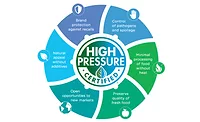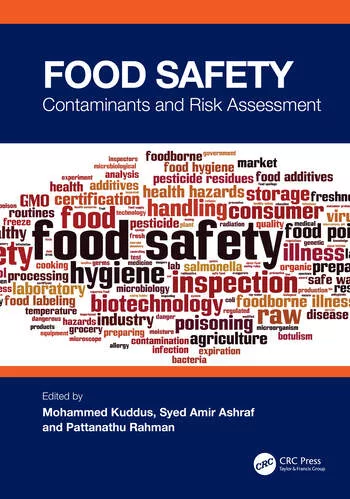Post-processing Pasteurization: Pressing innovation
Leveraging post-processing pasteurization technologies and methodologies is vital if meat and poultry processors are to eradicate the threat of pathogens throughout the production cycle.

Meat and poultry processors are under the food safety microscope. With the U.S. Department of Human Services’ Office of Disease Prevention and Health Promotion reporting foodborne illnesses sicken 48 million Americans each year, leading to 128,000 hospitalizations and 3,000 deaths, the regulatory pressure is on operators to maximize their safety protocols.
To reduce the risk, it is crucial that meat and poultry processors focus on food safety throughout the operational cycle, and that includes the pivotal post-processing pasteurization stage.
Tech in abundance
Among post-processing pasteurization treatments are high-pressure processing (HPP), a cold pasteurization technique in which products sealed in a final package receive high levels of isostatic pressure; steam and thermal applications; hot water dips and anti-microbial chemical dips. The cost of an application and its degree of effectiveness are key considerations for processors in deciding which option to leverage, says Matthew Taylor, associate professor of food safety microbiology in the Department of Animal Science at Texas A&M University in College Station.
“There is a U.S. Department of Agriculture level of anti-Listeria activity that has to be achieved in order for a technology to be validated as a post-lethality treatment,” he says. Processors can best determine the optimal system for their specific operation by reviewing performance data from technology suppliers and scientific researchers, including private laboratories and universities, as well as using in-house studies, he says.
Such information includes the impact that post-processing pasteurization technologies will have on product quality, and the subsequent reaction from consumers to the taste and composition of the proteins, Taylor says. Processors, for instance, should know the minimum dosages of antimicrobials that can adequately reduce microbiological pathogens, and the maximum dosages they can leverage before meat and poultry develop undesirable odors and/or undergo changes in color or texture, he says.
“It also is important for products to have as minimal exposure to heat as possible,” says Dan Siegel, owner and chief executive officer of Deli Star Corp., a Fayetteville, Ill.-based meat and poultry processor. “Because meat and poultry first undergo a hot cooking process, the added heat from post-processing pasteurization can damage the integrity of the muscle.”
Deli Star uses steam technology that is intended to kill pathogens at lower temperatures.
Looking for quick answers on food safety topics?
Try Ask FSM, our new smart AI search tool.
Ask FSM →
The heat is on
Post-processing pasteurizing temperatures can vary in accordance with the unique characteristics of each meat and poultry item, Siegel says. Protein salads, for instance, typically require less heat to achieve bacteriological lethality because of their lower pH levels, he says.
“The higher the post-processing pasteurization temperature, the greater the breakdown of protein in the meat, which can result in cooking juices out of the product,” he says. “Those types of changes are important to control. Higher temperatures, however, also typically result in shorter post-processing pasteurization time cycles, particularly if there is an attempt to achieve tenderness.”
Because of the different heat requirements, post-processing pasteurization with steam applications can last less than four hours for a diced chicken product, and extend to more than eight hours for a 20-pound bag of chicken salad, Siegel says. The objective remains: Kill pathogens without compromising a product’s integrity or its quality characteristics, he says.
“The meat binding, for example, has to remain strong on slicing logs and there is negative yield if too much juice is lost,” Siegel says.
The expense to implement post-processing pasteurization systems also can vary in accordance with the application and degree of sophistication. But because of the typically slim meat and poultry profit margins, it is crucial for operators to work at keeping expenses to a minimum without sacrificing food safety, Taylor says.
In many instances, it can average less than 1 cent to treat a single item, such as a hot dog, he says.
Ongoing expenses include water and energy use, machine maintenance, worker salaries and employee training costs, along with the possible need to renovate existing facilities to install new equipment.
“Processors must have people who know how to get the technologies to function properly and keep it that way,” Taylor says. “If the equipment is not in the right working order, there won’t be confidence that performance data from the technologies on the effect of the antimicrobial treatments is accurate.”
The equipment itself also can be expensive with technologies often ranging from tens of thousands to several million dollars, depending on size and functionality, analysts say.
A parade of upgrades
Newer designs, meanwhile, are driving down processing costs by enabling operators to treat larger batches of proteins more quickly, says Mark Fleck, high-pressure pasteurization specialist and consultant for Universal Pasteurization Co., a Villa Rica, Ga.-based third-party post-processing pasteurization services firm. HPP machine capacity for larger operations, for instance, has risen over the last decade from 215 liters to 525 liters, and some equipment enables users to run eight to 10 processing cycles per hour instead of the previous five to six, he says.
Because HPP remains a batch operation, however, there are limits to throughput, Fleck says. During pasteurization, meat or poultry is put in a basket that goes into a vessel where operators pump in water. The water pressure that kills bacteria typically has a hold time of two to four minutes.
“The higher the pressure and longer the hold time, the greater impact HPP will have against pathogens and spoilage organisms,” Fleck says. “It is important to know the right time and pressure for each product to produce the best results.”
Technologies, meanwhile, also are evolving to better support the greater shopper demand for organic and natural foods and other items with clean labels, he says. Similar to the products themselves, more post-processing pasteurization applications contain antimicrobial elements that derive from natural compounds instead of synthetic ingredients, Taylor says.
Among other sector advances is the greater understanding among university and scientific researchers on the use of hurdle technologies, in which operators pair different antimicrobial applications, Taylor says.
“Some processors may use an antimicrobial hurdle process where they marry naturally derived antimicrobials to a mild steam application process as steam is very natural,” he says. “In addition, processors can apply multiple post-processing pasteurization treatments in a specific sequence to better protect products while giving consumers an ingredient label that is understandable or familiar.”
No shortage of challenges
While operators see a greater option of post-processing pasteurization technologies and processes are becoming more effective, many still face the challenge of scientifically validating their systems to demonstrate to regulators the applications are indeed achieving reductions in pathogens, Taylor says.
Another major concern is whether the technologies processors are using to control a specific pathogen will also be effective against additional bacterial organisms that might eventually become pathogenic, he states.
“Processors that choose a technology to primarily control Listeria monocytogenes need to contemplate the impact it will have on other types of human pathogens, such as Salmonella,” he says. “They must know what their technologies will or will not do in case they need to take additional food safety steps.”
There also is a need to ensure that the switch to more natural post-processing pasteurization ingredients does not compromise effectiveness, Fleck states. “Some of the chemical preservatives that have been used in the past have inhibited the growth of bacteria,” he says. “Taking the elements out may actually increase the food safety risk.”
In addition to enhancing food safety by eradicating such pathogens as Listeria monocytogenes, Salmonella and E. coli O157:H7, some post-processing pasteurization technologies also can assist in extending the shelf life of proteins by attacking spoilage organisms, such as mold and yeast, Fleck says. Yet, such benefits may also result in packaging challenges, he says.
“A package that was designed for a 40- or 50-day shelf life may not be suitable for double that amount because such elements as barrier properties, oxygen transmission rates, moisture vapor transmission rates and characteristics about the packages themselves may not be adequate,” Fleck says. “It is important to consider the need for different packaging in those circumstances.”
While such issues create operational challenges for meat and poultry processors, an ongoing focus by equipment manufacturers and operators on improving post-processing pasteurization machines and methodologies will likely result in greater effectiveness, efficiencies and machine reliability, Fleck says.
“More companies are researching and implementing post-processing pasteurization technologies so the knowledge base continues to build and more and more applications are coming to light,” he says. NP
This article was originally posted on www.provisioneronline.com.









